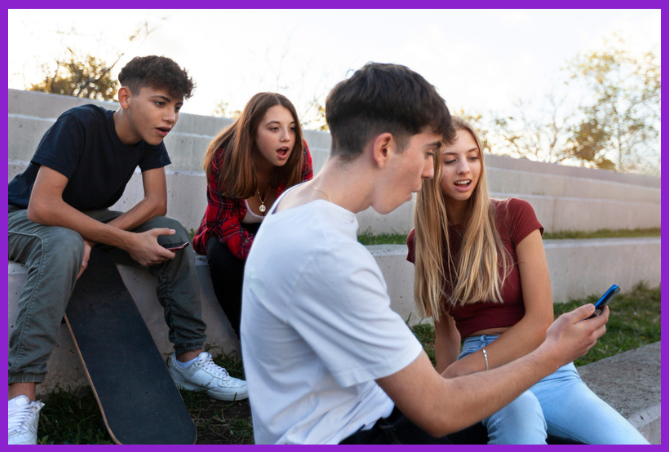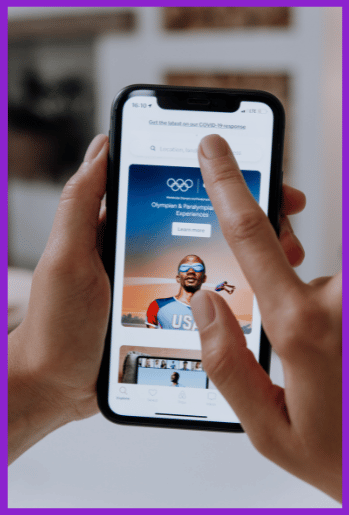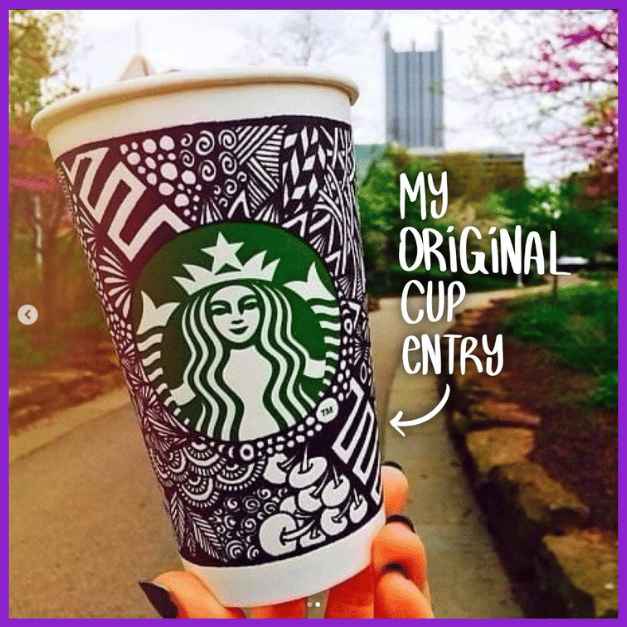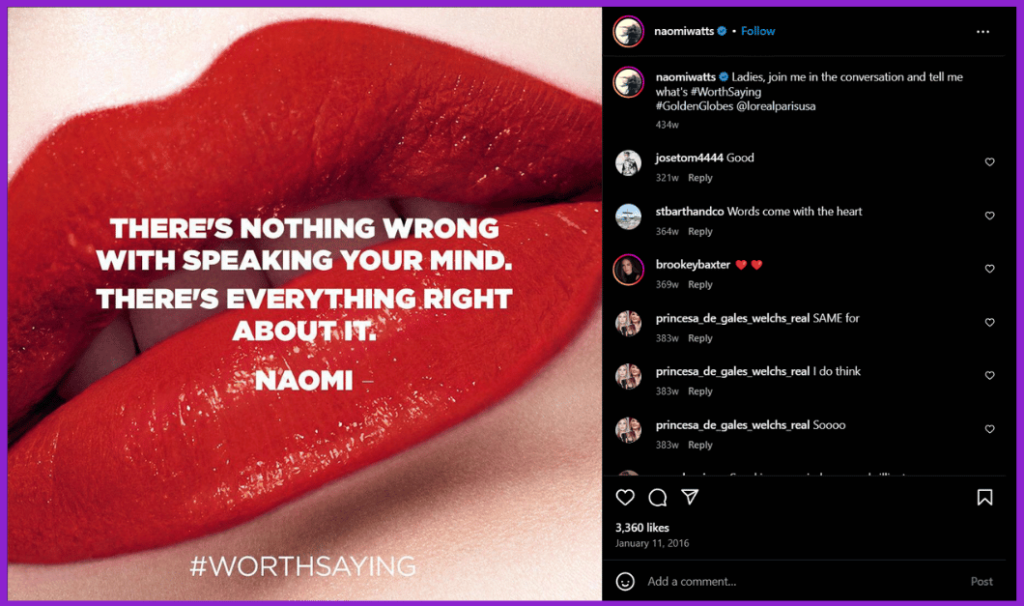
You may have seen people posting photos or videos on social media, of products they purchased, and tagging the product brand as well.
Or, you may have seen feedbacks, reviews, or testimonials (of a product/service) posted by people on Yelp, Google My Business, Reddit, or Quora.
These are examples of user generated content (UGC) created by regular people, not by brands or marketers. UGC showcase the experience of customers purchasing or using products from their favourite brands.
Whether you are in B2C or B2B space, UGC can play critical role in your marketing campaigns.
In this blog post, we are going talk about:
- What is user generated content?
- Why user generated content is important for your business?
- Types of user generated content
- How to get user generated content for your marketing campaigns
- How to use user generated content in your marketing campaign
- Best practices for leveraging user generated content
- Examples of user generated content marketing campaigns
Let’s get started.
What is User Generated Content (UGC): From a Marketer’s Perspective
In simple words, user generated content (UGC) refers to any form of content (such as images, text, videos, and audio) that has been posted by users on online platforms such as social media, blogs, and discussion forums.
Users creating and sharing content about brands they love, which can be incredibly valuable for those brands as it is authentic, and people often trust other users’ opinions more than brands’ corporate messaging.
It can also help to build a community around a brand and foster engagement.
UGC is essentially a digital version of word-of-mouth.
For example, I’ve been using Canva for designing images for my blogs and social media posts, from 2016 onwards. I didn’t have to find an alternative as Canva fulfils my graphic design requirements.
So, I shared a post complimenting Canva and tagging the brand on X (Twitter), as shown below in the screenshot.

From Canva’s perspective, the post I created and shared is a user-generated content.
Why User Generated Content is Important for Your Business?
Here are the reasons why user-generated content is an important marketing strategy for your business.
1. Build Authenticity
User generated content (UGC) provides a genuine portrayal of your brand through the eyes of your target audience. It’s raw, unfiltered, and therefore trustworthy.
In an age where people are increasingly skeptical of traditional brand messaging, authenticity reigns supreme.
When your target audience see real people using and enjoying your product/service, they are more likely to trust your brand.
2. Drives More Engagement
UGC sparks conversations and interactions with your target audience.
By encouraging users to share their experiences, opinions, and creations related to your brand, you are fostering a sense of community and involvement.

This engagement not only strengthens the relationship between your brand and its followers but also keeps them actively participating in your marketing efforts.
3. Highly Cost Effective
As you know, creating high-quality content can be time-consuming and expensive at the same time.
User-generated content, on the other hand, leverages your existing customer base to create content for your brand.
Not only does this reduce the burden on your marketing budget, but it also allows for a content stream of fresh, diverse content without the need for extensive production resources.
4. Brand Loyalty and Advocacy
Encouraging your customers to contribute content fosters a sense of ownership and loyalty towards your brand.
When they feel like active participants in your brand’s story, they’re more likely to become advocates who promote your product/service to their networks.
This word-of-mouth marketing is incredibly powerful and can lead to exponential growth as satisfied customers become brand ambassadors.
5. Social Proof
People tend to follow the crowd. When they see others positively engage with your brand, it serves as powerful social proof.
UGC showcases real-life experiences and testimonials, influencing potential customers by demonstrating that others have found value in your product/service offering.

This social validation can significantly impact purchase decisions, especially in industries where trust and credibility are paramount.
6. UGC Gives You Diverse Perspectives
UGC provides a wealth of diverse perspectives and experiences that resonate with different segments of you audience.
Each piece of user-generated content reflects the unique viewpoints, backgrounds, and lifestyles of the individuals creating it.
This diversity not only broadens the appeal of your marketing efforts but also ensures that your messaging remains relevant and inclusive to a wide range of audiences.
7. Provide SEO Benefits
Did you know that user-generated content (UGC) can boost your SEO efforts?
When your target audience create content (say, blogs) related to your brand, they often incorporate keywords and phrases naturally, improving your website’s search engine visibility.
Additionally, UGC generates valuable backlinks as others share and reference the content, further enhance your SEO rankings.
8. You Can Make Continuous Improvements
UGC provides invaluable feedback and insights into your product/service, and overall brand perception.
By monitoring and analyzing UGC, you can identify trends, address concerns, and make informed decisions to continuously improve your offerings.
Types of User Generated Content
There are different types of user-generated content and here we are going to discuss those types that are useful in your marketing efforts.
Blogs
There are people who write blogs on their personal blogging website or other third-party blogging platforms like Medium, Blogspot, Hubpages, or Tumblr.
So, you can find UGC in the form of blogs written by people who used your product/service, the purchasing experience, or the benefits they got when they associated with your brand.
Videos or Vlogs
Videos or vlogs is a powerful form of UGC because it is very engaging and represents user satisfaction visually.
You can find user-generated videos of your customers sharing their detailed experiences, like unboxing your product, explaining your service, or tutorials related to your product/service.
Reviews and Testimonials
Another powerful form of UGC are written reviews or testimonials.
Users sharing their opinions and experiences with a product/service provide that brand with valuable insights for potential customers and credibility for the brand.
Images and Photos
Customers share images and photos of capturing their interactions with your brand or their product/service.
You can find often this visual content on social media platforms and messaging platforms. This kind of UGC adds a personal touch and authenticity to your brand’s image.
Social Media Content
Here, social media content is a type of UGC other than videos, images and photos. It can be simple tweet (or Threads post) that gives a positive mention of your brand.
Or, it can be full-text post on Linkedin or Facebook explain users’ experience with your product or service, or telling an incident about your brand.
Another UGC type is taking a screenshot and share it directly (or turn it as a graphic and share it) on a social media platform.
Comments from Blogs, Social Media, and Forums
Customers can write comments under your brand’s blog, social media post, or discussion forum (like Reddit or Quora) that talk about their experience with your brand or product/service.
How to Get User Generated Content for Your Marketing Campaign
To get UGC for your marketing campaigns, first you need to ask your loyal customers and brand followers to create the content for you. Here are 10 different ways you can do it.
1. Create Branded Hashtag Campaigns
Do you remember #IceBucketChallenge and #ShotOniPhone campaigns?
These campaigns very so ‘viral’ that everyone across the globe jumped on and shared their content on all major social media platforms.

You can develop your own branded hashtags and encourage your audience to use them when posting content related to your product/service or your brand.
This makes it easier for you to discover and curate user-generated content.
2. Run Contests and Challenges
Organize contests or challenges where your audience or followers can submit videos, photos, or stories related to your product, or your brand.
To incentivize audience participation, you can offer attractive prizes or rewards.
3. Encourage Reviews and Testimonials
Prompt your customers to share their experiences with your product/service by leaving reviews or testimonials on your website, social media channels, or popular review websites.
4. Showcase Customers’ Real-life Stories
When you showcase real-life stories and experiences shared by customers on your website or social media channels, it not only highlights the authenticity of your brand but also encourages others to contribute their own content.
5. Engage with User Content
Actively engage with your customers/followers’ social media posts by liking, commenting and sharing their posts.
This not only shows appreciation but also encourages others to participate.
6. Offer Exclusive Opportunities
Provide exclusive opportunities for your customers to be featured on your website, social media channels, or other marketing channels by submitting their content.

For example, an important event for your business is approaching (say, foundation day or reaching sales targets for specific quarter) so you can approach your loyal customers with an opportunity to get featured on your website, TV/newspaper ads, or your social media channels.
Customers can submit content on their experiences of their long-term partnership with your brand.
7. Partnering with Influencers
Collaborate with influencers in your industry who can encourage their followers to create and share content related your brand or product/service.
Nano-influencers or nano-creators are more approachable compared to bigger counterparts. You can consider them for making partnerships.
8. Get Help Your Employees as Well
You can get help from your employees in getting UGC for your brand. Your employees can reshare your message requesting audience to contribute.
Some employees may be influencers on their own right and you can target their audience who shows interest in your brand or product/service.
9. Provide Clear Guidelines
Make it easy for your audience/customers to understand what type of content you’re looking for and any guidelines or requirements for submissions.
10. Show Appreciation
Always acknowledge and appreciate the contributions of your audience and from customers. For example, show appreciation to travellers who are regular visitors in your homestay.
Consider featuring user-generated content prominently in your marketing channels and don’t forget to thank contributors publicly.
How to Integrate UGC into Your Marketing Campaigns
After gathering UGC from your customers or followers, the next step is to integrate it in your marketing campaigns. Here’s how you can do it.
On Your Website
You can use UGC on your business website in different ways.
You can publish articles written by your loyal customers on your website as guest posts. Or, you can customer testimonials or feedbacks on your blogs that talk about your product or service offerings.

Showcase recent customer testimonials on your website homepage and create a dedicated page for testimonials as well. Make sure to keep update the testimonials page from time to time.
If you have product/service case studies on your website, then you can insert UGC (especially customer testimonials/feedbacks) in the form of image, screenshot or an infographic.
If you are looking to build a new website for your business then anyone of these platforms can help you to fulfil it – Namecheap, WordPress.com, Bluehost, Domain.com, Hostinger, or Shopify.
On Social Media
You can reshare/repost user-generated social media posts that tagged your brand or used your branded hashtags.
Don’t forget to thank those customers by commenting under their social media posts.
For Instagram, you can share UGC on your page by collaborating with the posts’ original creators.
You can also share UGC from review websites (or other social media platforms) in the form of screenshots, or you can share user-generated articles talks about your brand or product.
You can do shoutouts through livestreaming to those customers who made considerable UGC contributions.
You can incorporate UGC in explainer videos, short-form videos, storytelling videos, tutorial videos, product demo videos, etc and distribute them on video sharing platforms like YouTube, Instagram Reels, TikTok, and Facebook.
To simplify your video creation/editing process, you can use online video creation tools like Animoto, InVideo, Renderforest, Biteable and Animaker.
In Your Email Campaigns
You can incorporate user-generated content directly into your email content.
This could include embedding customer reviews/testimonials, showcasing user-submitted photos or videos, or sharing social media posts featuring your brand.
Make sure the UGC is visually appealing and relevant to the email’s purpose.
Encourage recipients to engage with the UGC featured in your email marketing campaigns.
Include calls-to-action prompting your subscribers to share their own experiences or opinions, visit your social media profiles or company website, or interact with in other ways.
In Paid Ads
You can rely on paid ads if you want to boost the performance of your UGC-based promotion.
Determine which advertising platforms you will be using (for example, Facebook, Instagram, Google, YouTube, etc.) and tailor the UGC to fit the format and specifications of each advertising platform.
Write ad copy that complements the user-generated content and provides context to your audience. You can highlight the key benefits or features of your product/service while incorporating the genuine experiences shared in the UGC.
To get your audience’s attention towards your ads, design visually appealing ads that feature the UGC prominently.

This could involve overlaying text, logos, or additional graphics to enhance the visual appeal while maintaining the authenticity of the original content.
Test different variations of your ads, including different UGC pieces, ad copy, and visuals, to identify which combinations resonate best with your target audience.
In Demand Generation Campaigns
If you are a B2B business and wants to create demand for your product or service offerings then demand generation is the best way forward.
Incorporating user-generated content into your demand generation campaign can significantly enhance its effectiveness by fostering authenticity, building trust, and engaging your B2B audience.
Determine where UGC naturally occurs related to your brand, products, or services. This could include social media platforms, review websites, forums, or community groups.
Analyse existing UGC to identify content that aligns with your campaign goals (whether it is increasing brand awareness, driving conversions, or boosting engagement) and resonates with your audience.
Repurpose High Performing Content
You can repurpose high performing user-generated content and distribute it across your online channels. Check out this article for a deeper dive on content repurposing.
Best Practices to Follow when Using UGC in Marketing Campaigns
- Seek Permission
Always obtain permission from the creator before using their content. This can be done through direct communication or by clearly stating the terms of use when soliciting UGC.
- Give Due Credit
Acknowledge the original UGC creator by tagging them or mentioning their username when sharing their content. This not only shows respect for their work but also helps build goodwill with the creator and your audience.
- Maintain Authenticity
Use UGC that reflects the genuine experiences and opinions of your customers or followers. Avoid altering or overly polishing the content, as authenticity is a key factor in building trust with your audience.
- Moderate Appropriately
While authenticity is important, it’s also necessary to moderate UGC to ensure it aligns with your brand values and guidelines. This may involve filtering out irrelevant or inappropriate user-generate content before sharing it in your marketing campaigns.
- Provide Guidelines
Provide clear instructions or guidelines for creating UGC that aligns with your brand’s messaging and objectives. This can help users in generating content is more likely to be useful for your marketing efforts.
- Stay Compliant
Ensure compliance with relevant laws and regulations, such as copyright and privacy laws, when using UGC in your marketing campaigns.
Respect the rights of content creators and obtain the necessary permissions or licenses as required.
- Measure Performance
Track the performance of your user generated content (UGC) marketing campaigns using relevant metrics such as engagement, reach, conversions, and sentiment analysis.
Use this data to refine your strategies and optimize future campaigns.
10 User Generated Content (UGC) Marketing Campaign Examples
Here are 7 user-generated content (UGC) campaigns done by brands that you can use as a reference for creating your own campaigns.
Starbucks’ White Cup Contest
In 2014, Starbucks launched a campaign encouraging customers to decorate their white coffee cups and share their designs on social media with the hashtag #WhiteCupContest.

The winning design would be produced as a limited-edition Starbucks cup.
This campaign generated thousands of entries and garnered significant social media engagement.
GoPro’s Photo of the Day
GoPro encourages users to share their action-packed photos and videos captured with their cameras on social media using the hashtag #GoPro.
Each day, GoPro selects the best user-submitted content and features it as the “Photo of the Day” on their website and social media channels.
This campaign not only showcases the capabilities of their product but also builds a community around adventure and creativity.
Coca-Cola’s “Share a Coke” Campaign
Coca-Cola replaced its logo on bottles and cans with popular names, encouraging customers to find bottles with their names or the names of friends and share photos of them enjoying the drink on social media with the hashtag #ShareACoke.

This campaign not only increased sales but also generated a massive amount of user-generated content featuring Coca-Cola products.
Lay’s “Do Us a Flavor” Contest
Lay’s launched a campaign inviting consumers to submit their ideas for new potato chip flavors.
The winning flavor would be produced and sold nationwide. Users submitted their flavor ideas online and encouraged their friends to vote for them.
This campaign not only generated a plethora of creative flavor ideas but also engaged consumers in the product development process.
Airbnb’s #WeAccept Campaign
In response to the global refugee crisis, Airbnb launched the #WeAccept campaign, encouraging users to share stories and photos of their experiences hosting refugees or traveling as refugees themselves.
The campaign aimed to promote a message of inclusivity and acceptance, aligning with Airbnb’s brand values of belonging and community.
Doritos’ “Crash the Super Bowl” Contest
Doritos ran an annual contest where consumers were invited to create their own Doritos commercials for the chance to have it aired during the Super Bowl.
Participants submitted their video entries, which were then voted on by the public. Winners not only had their commercials broadcasted to millions but also received cash prizes and other incentives.
Adidas’ #MyNeoShoot Campaign
Adidas Neo encouraged its customers to share photos of themselves wearing Adidas Neo products on social media using the hashtag #MyNeoShoot.
Selected photos were featured on the Adidas Neo website and social media channels, showcasing real customers and their style.
This campaign leveraged user-generated content to promote the brand’s products in an authentic and relatable way.
Apple’s “Shot on iPhone” Campaign
Apple launched a campaign showcasing stunning photographs taken by iPhone users around the world.
Users were encouraged to share their best iPhone photos on social media with the hashtag #ShotoniPhone.
Apple selected the most compelling images to feature in advertisements, billboards, and on their website, highlighting the quality of iPhone camera technology and the creativity of its users.
L’Oreal’s #WorthSaying Campaign
L’Oreal Paris launched the #WorthSaying campaign during the Golden Globes, encouraging women to share empowering messages and stories on social media.
Participants shared their thoughts on topics such as confidence, self-worth, and empowerment, along with the hashtag #WorthSaying.

L’Oreal featured selected posts on its social media channels, fostering a conversation around female empowerment and beauty beyond appearance.
GoDaddy’s #OpenWeStand Initiative
In response to the COVID-19 pandemic, GoDaddy launched the #OpenWeStand initiative to support small businesses and entrepreneurs.
The campaign encouraged small business owners to share their stories of resilience and innovation during challenging times on social media using the hashtag #OpenWeStand.
GoDaddy highlighted these stories on its website and social media platforms, amplifying the voices of small business owners and providing support and inspiration to others facing similar challenges.
Conclusion
Hope this article provided you a better understanding on how to leverage user-generated content (UGC) in your marketing campaigns.
I invite you to share your insights and reflections on this blog post. Your feedback is invaluable, and I look forward to continuing the conversation in the comments section.
